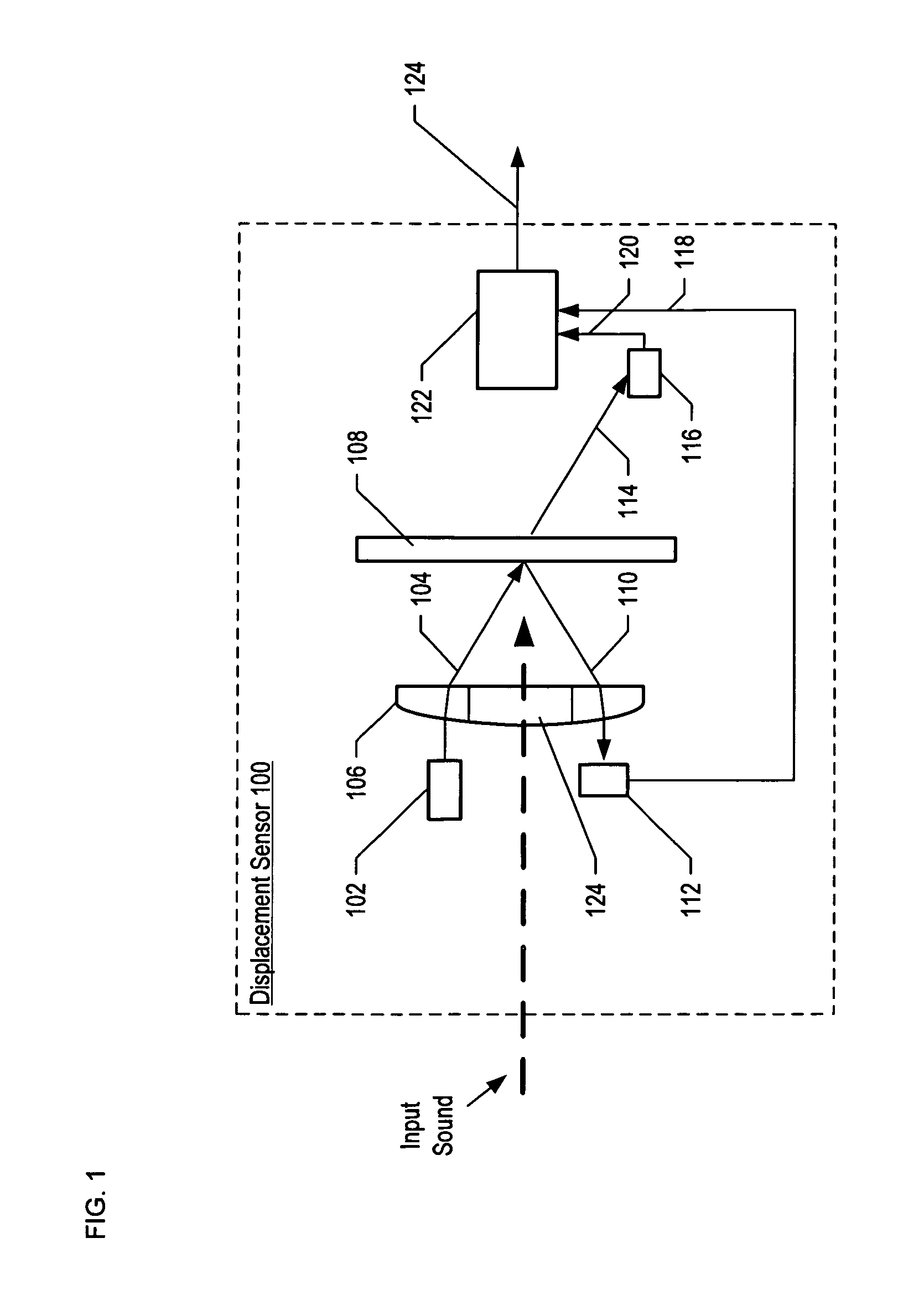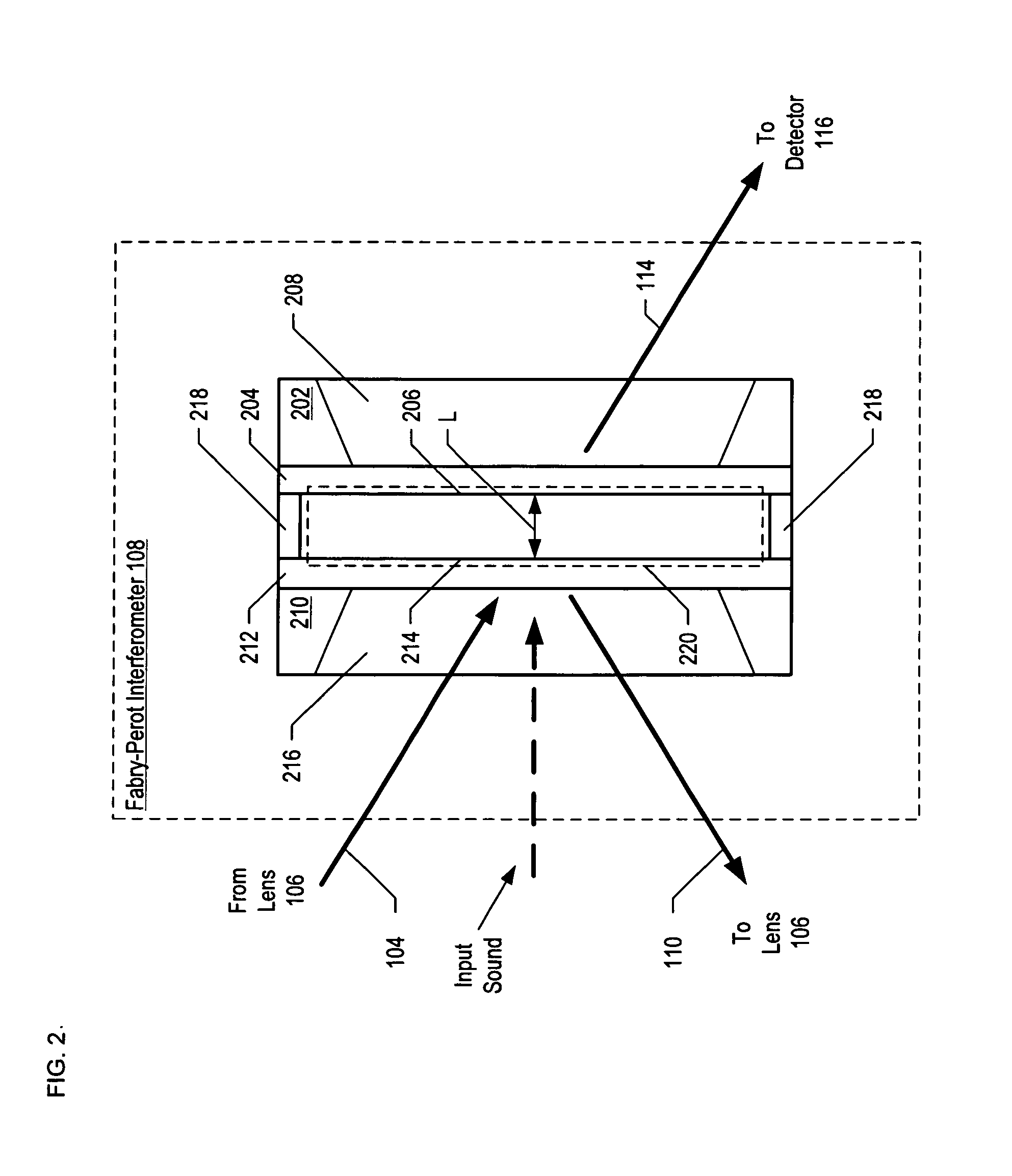Accelerometer comprising an optically resonant cavity
an accelerometer and cavity technology, applied in the field of accelerometers, can solve the problems of waste of a large amount of available optical energy, and achieve the effects of reducing noise, improving snr, and increasing signal strength
- Summary
- Abstract
- Description
- Claims
- Application Information
AI Technical Summary
Benefits of technology
Problems solved by technology
Method used
Image
Examples
Embodiment Construction
[0024]The following terms are defined for use in this Specification, including the appended claims:[0025]Cavity length means the instantaneous separation between two surfaces that form an optically-resonant cavity. Cavity length is fixed in the case of an optically-resonant etalon. Cavity length is variable in the case of an interferometer, such as a Fabry-Perot interferometer.[0026]Mechanically-coupled means that one device is linked to another device such that movement of the one device affects the other device. For example, a motor and a mirror are mechanically-coupled if actuation of the motor causes motion of the mirror. This could be through direct contact, as in the case of two physically-coupled devices (e.g., a mirror that is mounted on a linear-motor); or through an intermediate medium (e.g., a mirror that is moved via a hydraulic force that is generated by a motor).[0027]Operatively-coupled means that the operation of one device affects another device.[0028]Physically-cou...
PUM
| Property | Measurement | Unit |
|---|---|---|
| spectral-width | aaaaa | aaaaa |
| spectral-width | aaaaa | aaaaa |
| spectral-width | aaaaa | aaaaa |
Abstract
Description
Claims
Application Information
 Login to View More
Login to View More - R&D
- Intellectual Property
- Life Sciences
- Materials
- Tech Scout
- Unparalleled Data Quality
- Higher Quality Content
- 60% Fewer Hallucinations
Browse by: Latest US Patents, China's latest patents, Technical Efficacy Thesaurus, Application Domain, Technology Topic, Popular Technical Reports.
© 2025 PatSnap. All rights reserved.Legal|Privacy policy|Modern Slavery Act Transparency Statement|Sitemap|About US| Contact US: help@patsnap.com



